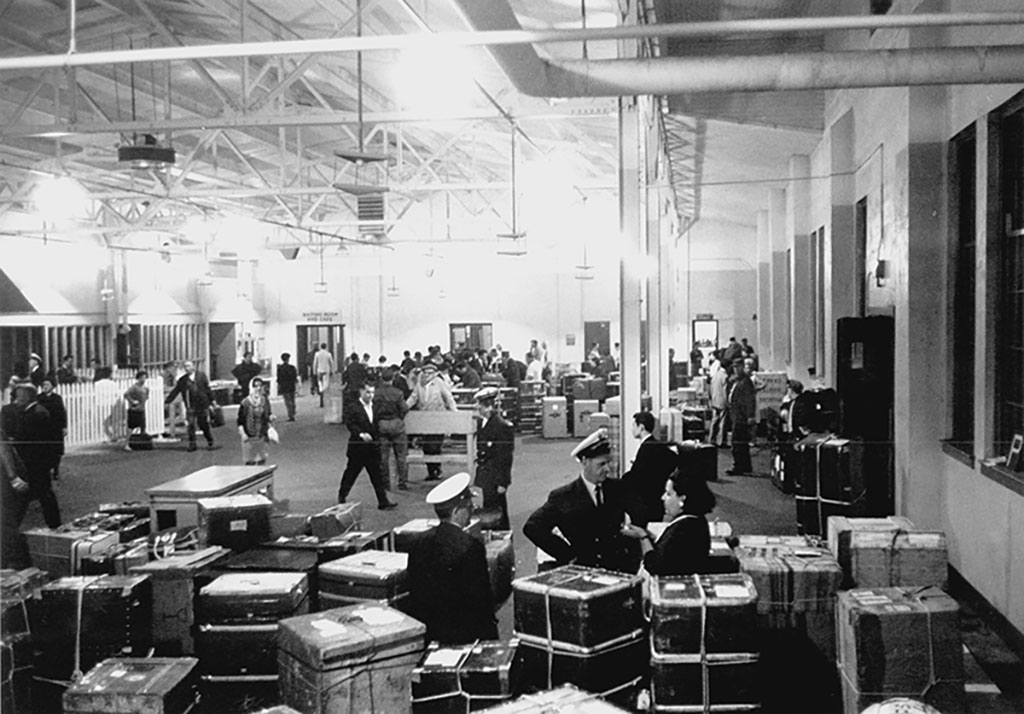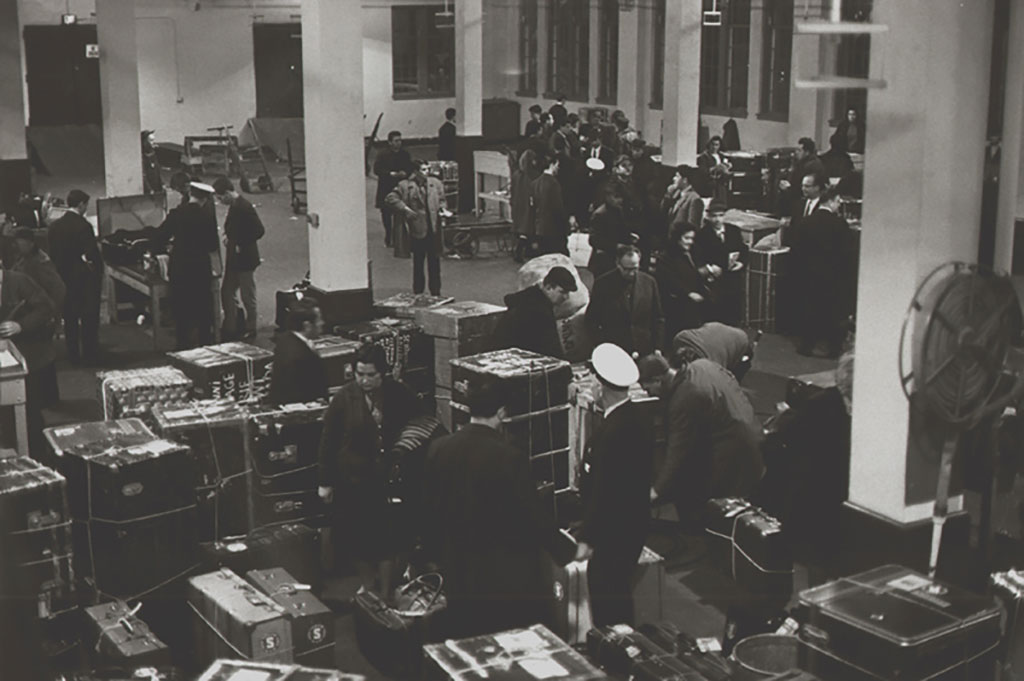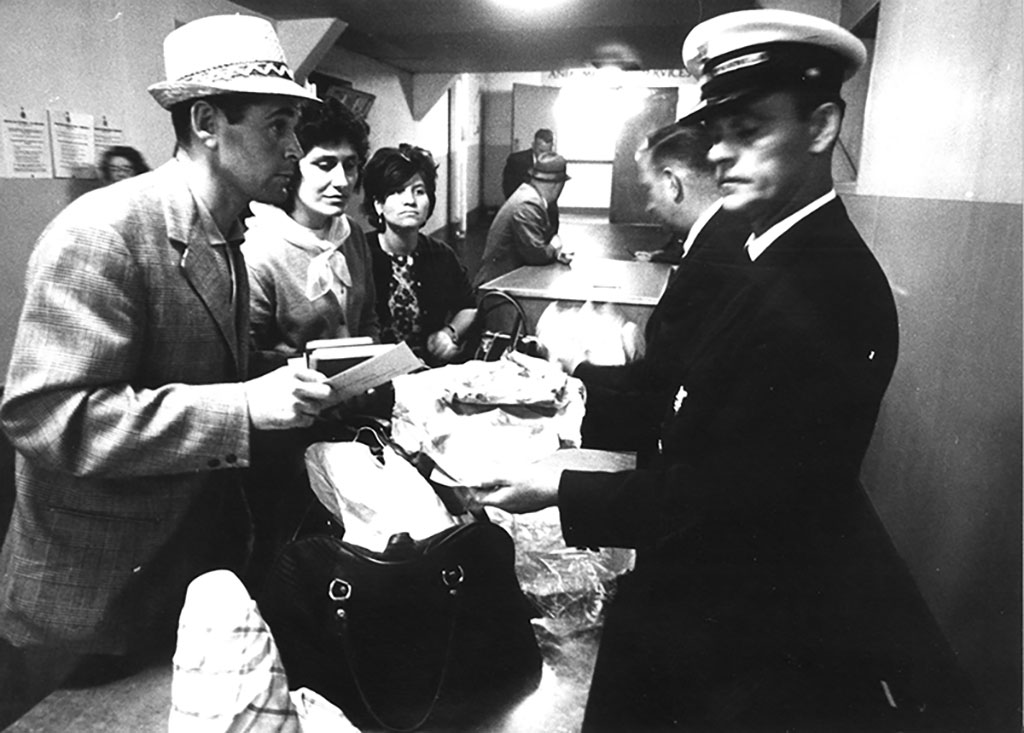by Jan Raska, PhD, Historian
(Updated October 2, 2020)
Introduction
Travellers approaching Canada’s border by car are asked by customs officers whether they have anything to declare. Whether entering the country at the border, airport, or port, travellers must go through Canadian customs before being permitted to continue on their journey. Returning Canadian citizens and permanent residents, tourists, students, temporary workers, immigrants and refugees all encounter customs officials upon arriving in Canada.
Studies of immigration and ethnic history in Canada often overlook or ignore discussing this vital part of a newcomer’s experience in Canada. Perhaps due to a lack of available first-hand accounts or other primary sources, this integral part of the immigration experience should be further examined. This blog will introduce the historic role of customs officials in Canada, and share some of the more amusing anecdotes from experiences on the job.
The Historic Role of Customs Officials in Canada
As of Confederation in 1867, customs officials were tasked with enforcing tariffs on a variety of items including: spirits, tobacco, playing cards, sugar, shoe leather, coffee, tea and patented medicines. Products that remained tariff-free were busts, dyes, gems, coal, eggs, rice, whale oil, wires, candle wicks, medicine for hospital use and settler’s effects. Over the years, the list of goods for which a duty had to be paid was expanded. In 1879, items listed included: fish, fruit, furs, meat, breadstuffs, farm animals, glass and iron. In 1917, automobiles, gramophones, movies and watches also contained a duty. Many of these aforementioned items were later removed as dutiable items.[1]
In Border Circular No. 10 issued in 1911, Canadian customs officers were expected to be “courteous in their dealings and conversation with the travelling public and with all transportation officials with whom they may have business.” Harassed or provoked customs officials were not permitted to be “discourteous” to any traveller arriving in Canada. Particular importance was placed on the American tourist to whom customs officials were to remain “courteous” at all times. If an officer was disrespectful to a traveller they were to be banished to the freight yards! Interestingly, the Canadian government prevented its customs officials from entering bars and saloons when dressed in uniform in an attempt to maintain the public’s respect and to avoid falling into disrepute or the mere perception of impropriety. Customs officials were to avoid using "intoxicants", abstain from cigarettes and from chewing tobacco or food while on duty. Along with regulating officers’ comportment, the Canadian government also expected its customs officials to maintain good hygiene and clean uniforms at all times.[2]
Canadian customs officers worked primarily at ocean terminals and train stations. These officials processed ship and train passengers before they embarked for their final destination. In the interwar period, Canadian customs officials attempted to reduce the confusion arising from the entry of scores of newcomers by issuing permits to newcomers who were on their way to meet their friends and relatives. As a result, many passengers cleared customs more rapidly than previously, except for immigrants who did not understand or speak English or French.[3]
In recalling his forty years as a Canadian customs official, J. Earl Donnan notes that during the 1930s travellers had surprising enquiries about the country and its customs laws including:
- “Am taking my dog into Canada. Does he require a birth certificate?”
- “Which hotel in Montreal, the Mount Royal or the Windsor, affords the best view of Niagara Falls?”
- “How can I address and seal a parcel so as to ensure that the Canadian Customs will not open and examine it?”
- “What port of entry is likely to give me the lowest rate of duty as I take my merchandise into Canada?”
- “How fast can your speed cops travel?”
- “What are the most satisfactory methods of smuggling goods across the border?”
- “When may I be sure the Customs Officers will not be on duty at the border?”
- “Has Ottawa any capital?”
- “How much liquor can I drink in Manitoba?”
- Asked whether he was visiting Canada for pleasure, a traveler replied: “No, I’m seeing my wife’s folks.”
- Asked if they were US citizens: “No, just farmers.”
- Asked to state the length of residence in Canada: “Thirty feet by forty feet.”[4]
During the Second World War, customs officials were also responsible for investigating whether Canadian currency and items ready for export were being sent to the Axis powers. After the Second World War, travel continued to expand as individuals increasingly travelled by air. At Canadian land crossings, ports and airports, customs officials continued to be responsible for enforcing the country’s immigration, agriculture and health laws. Returning Canadian citizens, tourists, immigrants and refugees were examined and questioned upon arriving in Canada.
On 1 October 1969, Canadian customs officials became responsible for representing all federal departments in their examination and questioning of travellers seeking to enter the country. At this time, approximately ten per cent of travellers were subjected to baggage examinations.[5]
In recent years, Canadian residents and non-Canadians continue to be prohibited from entering the country with goods deemed to be obscene; counterfeit currency and goods; firearms and weapons; used or second-hand mattresses; food, plants, and animals; literature pertaining to hate, propaganda, treason, and sedition; and goods produced through prison labour.[6]
Conclusion
This blog outlined the historic role of Canadian customs officials, a vital and often overlooked part of the immigration experience of many newcomers. Be sure to read my follow-up to this blog, Anything to Declare? Part 2 - Reflections on Immigration and Customs Experiences at Pier 21, which examines the customs experience through first-hand stories of immigrants who passed through Pier 21.

Credit: Canadian Museum of Immigration at Pier 21 Collection (DI2013.1362.12)

Credit: Canadian Museum of Immigration at Pier 21 Collection (DI2013.1362.6b)

Credit: Canadian Museum of Immigration at Pier 21 Collection (DI2013.838.1)
- Dave McIntosh, The Collectors: A History of Canadian Customs and Excise (Ottawa: NC Press, 1984), 111-112, 129, 134.
- McIntosh, Collectors, 336.
- McIntosh, Collectors, 139.
- McIntosh, Collectors, 342. Excerpt is originally from J. Earl Donnan, My First 40 Years with Canada Customs (Publisher Unknown, 1952).
- McIntosh, Collectors, 344-345.
- Canada Border Services Agency, “Prohibited or Restricted Goods,” accessed: 10 January 2013, http://www.cbsa-asfc.gc.ca/security-securite/prohib-eng.html.
